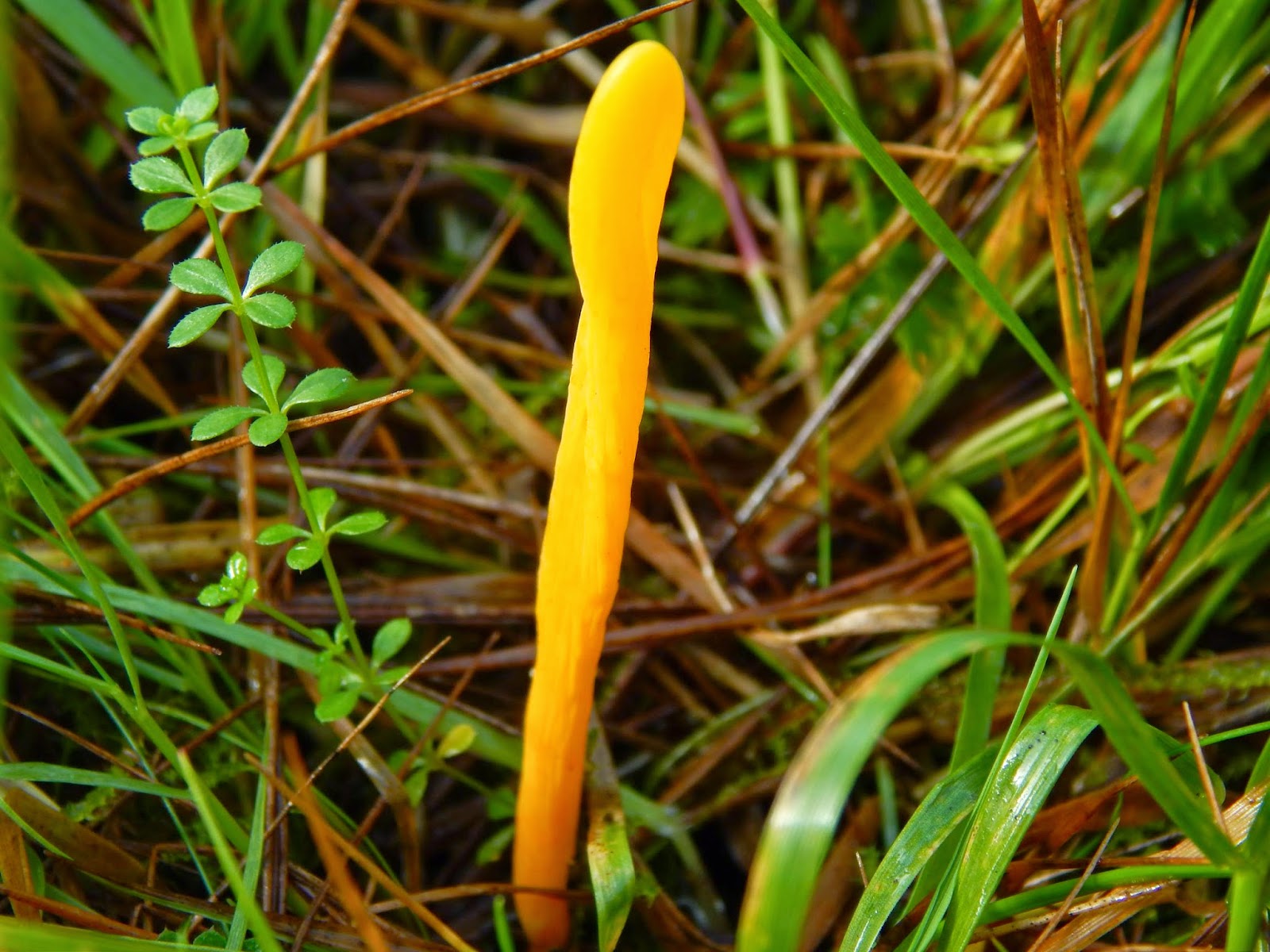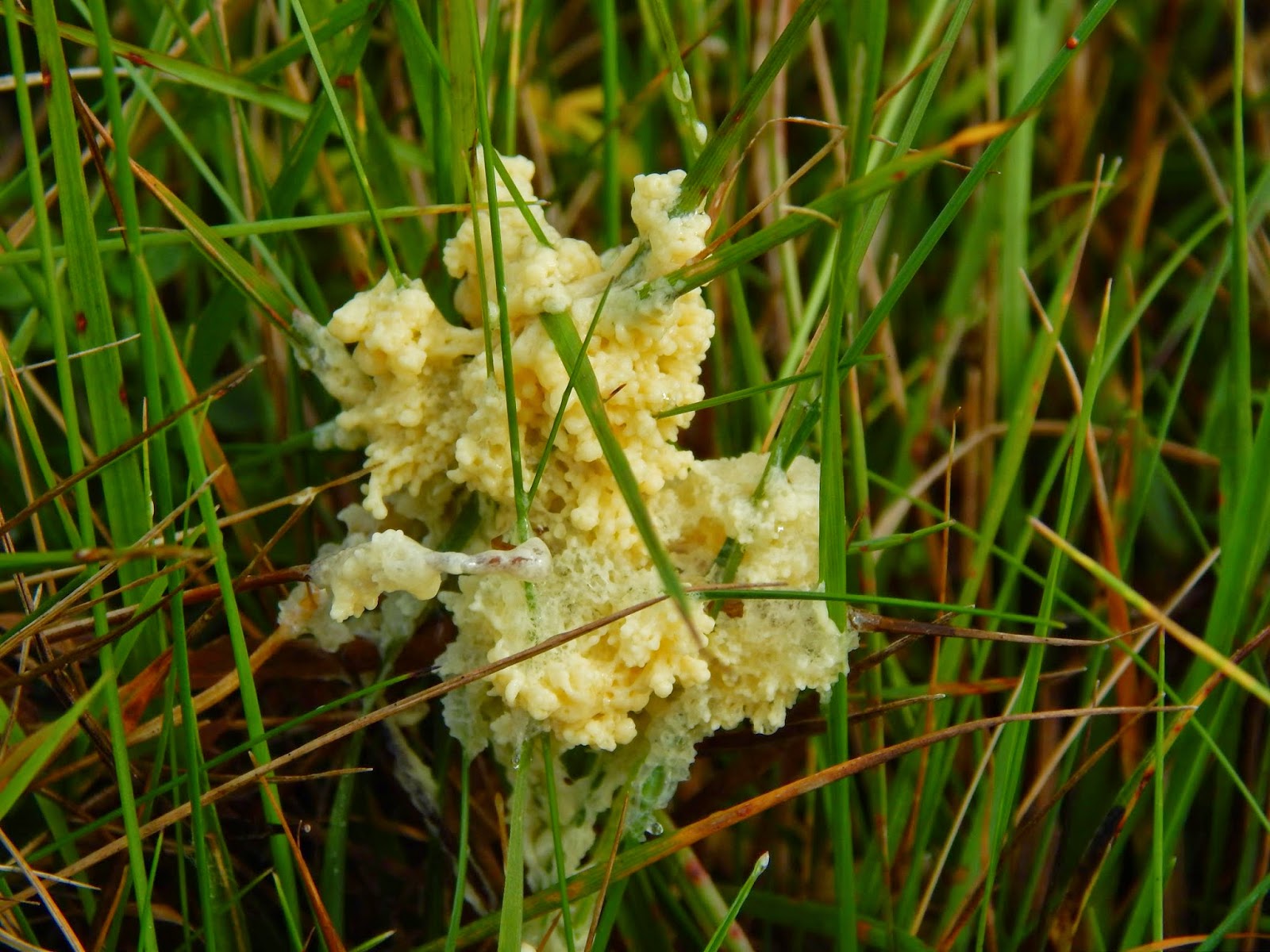Here are a few of the fungi that I found whilst walking Basil around the reserve.
Arrhenia rickenii above and two below.
I found this group growing on a moss covered wall which is the typical habitat for this species.
It is a very small fungus and the caps were between 0.5 and 1.5 cm in diameter and it it ranged in height from 0.5 to 2 cm.
Shaggy Scalycap (Pholiota squarrosa).
I found Powderpuff Bracket (Postia ptychogaster)
growing at the base of a Pinus sylvestris tree - above and two below.
Meadow Waxcap (Hygrocybe pratensis).
Common Rustgill (Gymnopilus penetrans) above and below.
Stump Puffball (Lycoperdon pyriforme).
Ferny Bonnet (Mycena pterigena) above and below
These are gorgeous, delicate pink bonnets that can be found growing on decomposing fern debris.
Wood Oysterling (Melanotus horizontalis) above and below.
Rush Disco (Lachnum apalum) above and five below.
It has long, spindle shaped spores that are septate and measured 35-46.2 x 1.5 microns.
The lanceolate paraphyses extended beyond the asci in length.
Asci tips blued in Lugols.
Snakeskin Brownie (Hypholoma marginatum) young specimen above and mature specimen below.
A species of Typhula that I found growing alongside Mycena pterigena but I am unsure of which one it actually is.
The longest was approximately 2 cm.
They were pure white with a slender club shaped head.
I thought they could be T. erythropus due to the length but they usually have a brown stipe.
Allantoid spores, 10- 11 x 3.5-4.5 microns.
Conifer Tuft (Hypholoma capnoides) above and below.
Milking Bonnet (Mycena galopus).
Rufous Milkcap (Lactarius rufus).
False Chanterelle (Hygrophoropsis aurantiaca).
Flaming Scalycap (Pholiota flammans) above and below.
Plums and Custard (Tricholomopsis rutilans) above and below.
Conifer Bluing Bracket (Postia caesia) above and below.

















.jpeg)
.jpeg)
.jpeg)
.jpeg)
.jpeg)
.jpeg)
.jpeg)
.jpeg)
.jpeg)
.jpeg)
.jpeg)
.jpeg)

.jpeg)

.jpeg)
.jpeg)
.jpeg)
.jpeg)
.jpeg)
.jpeg)

.jpeg)










.jpeg)
.jpeg)

_edited-1.jpg)
.jpeg)
.jpeg)

.jpeg)

.jpeg)
.jpeg)
.jpeg)
.jpeg)
.jpeg)
.jpeg)